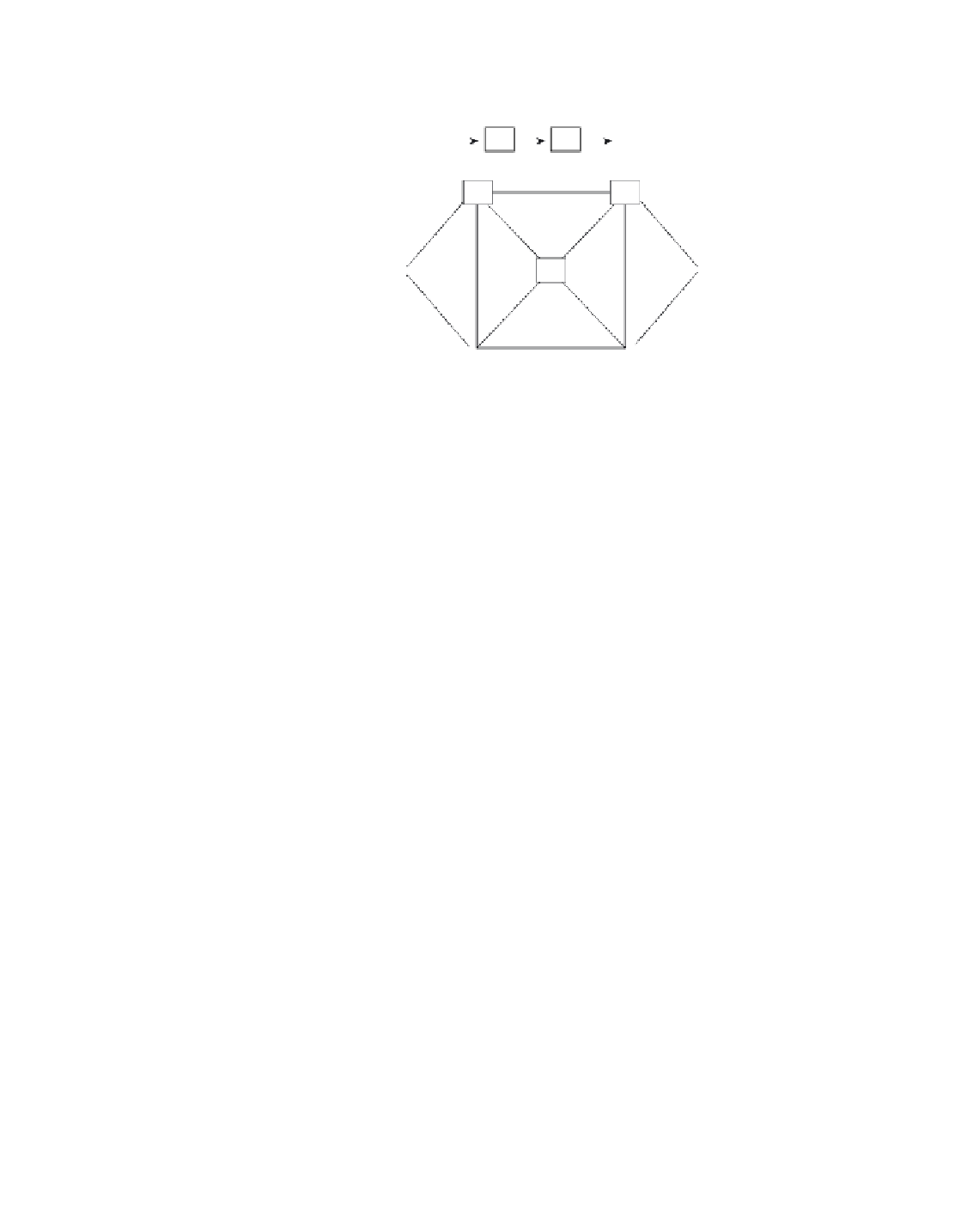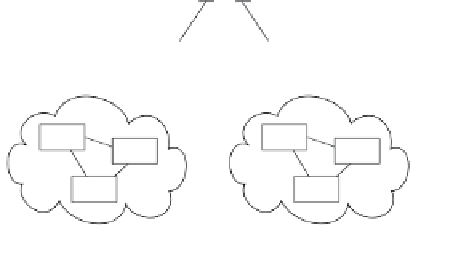Information Technology Reference
In-Depth Information
Figure11-3
A DECnet Phase IV Routing Protocol Cost Calculation
Best path to destination
Source
A
D
Destination
4
A
D
5
2
2
3
7
8
C
Source
Destination
3
2
4
6
B
E
3
Addressing
DECnet addresses are not associated with the physical networks to which the nodes are connected.
Instead, DECnet locates hosts using area/node address pairs. An area's value ranges from 1 to 63,
inclusive. A node address can be between 1 and 1023, inclusive. Therefore, each area can have 1023
nodes, and approximately 65,000 nodes can be addressed in a DECnet network. Areas can span many
routers, and a single cable can support many areas. Therefore, if a node has several network interfaces,
it uses the same area/node address for each interface. Figure 11-4 shows a sample DECnet network with
several addressable entities.
Figure11-4
Examples of DECnet Addresses
10
1
Area
number
Node
number
10 1
5 1
10 2
5 2
10 3
5 3
Area 10
Area 5
DECnet hosts do not use manufacturer-assigned Media Access Control (MAC)-layer addresses. Instead,
network-level addresses are embedded in the MAC-layer address according to an algorithm that
multiplies the area number by 1,024 and adds the node number to the product. The resulting 16-bit
decimal address is converted to a hexadecimal number and appended to the address AA00.0400 in
byte-swapped order, with the least significant byte first. For example, DECnet address 12.75 becomes
12363 (base 10), which equals 304B (base 16). After this byte-swapped address is appended to the
standard DECnet MAC address prefix, the resulting address is AA00.0400.4B30.













